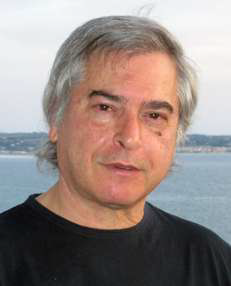| 个人简介 | |
|---|---|
 Prof. Elias C. Aifantis Lab of Mechanics and Materials, Aristotle University of Thessaloniki, Greece |
|
| 标题: Newton and Hooke Revisited | |
| 摘要: Newton's law of gravity for particle mechanics and Hooke's law of elasticity for continuum mechanics were proposed at the same time and form the basis for describing the forces emerging during the interaction of individual ''distant'' particles in space or ''neighboring'' deformable ones in deformable media. They served as a basis of today's civilization, and are still used in various areas of science and engineering including geology and biology, as well mining and materials engineering. The lecture outlines a recent proposed modification of these laws to account for nonlocal and fractional/fractal effects. Some examples illustrating the relevance of this modification are presented. Reference E.C.Aifantis (2021). Gradient Extension of Classical Material Models: From Nuclear & Condensed Matter Scales to Earth & Cosmological Scales. Chapter in press. | |
| 简介: Elias C. Aifantis is currently an Emeritus Professor of Mechanics at Aristotle University of Thessaloniki/Greece and Michigan Technological University/USA, as well as Mercator fellow at Friedrich-Alexander University/Germany and a Distinguished Professor at Beijing University of Civil Engineering and Architecture/China. Formerly, he has also been a Distinguished Faculty Advisor at King Abdulaziz University/Saudi Arabia, Distinguished Visiting Expert at ITMO University/Russia and Southwest Jiaotong University/China, as well as MegaGrant Director at Togliatti State University /Russia. He has promoted highly interdisciplinary work in mechanics of materials by bringing into the field of solid mechanics ideas from diffusion theory, chemical reactions, and nonlinear physics. He has coined the terms dislocation patterning, material instabilities, gradient plasticity/elasticity, chemo/nanomechanics, and pioneered internal length gradient (ILG) theories in these fields. Currently, he is extending the ILG framework to revisit electromagnetism and Maxwell’s equations, as well as gravitation and Newton’s Law. He has published over 339 articles and received about 11,704 citations with 54 h-index (Scopus); 10,832 citations with 53 h-index (Web of Science); 17,860 citations with 66 h-index (Google Scholar). He is included in the ISI Web of knowledge list of the world’s most highly cited authors in engineering. | |
